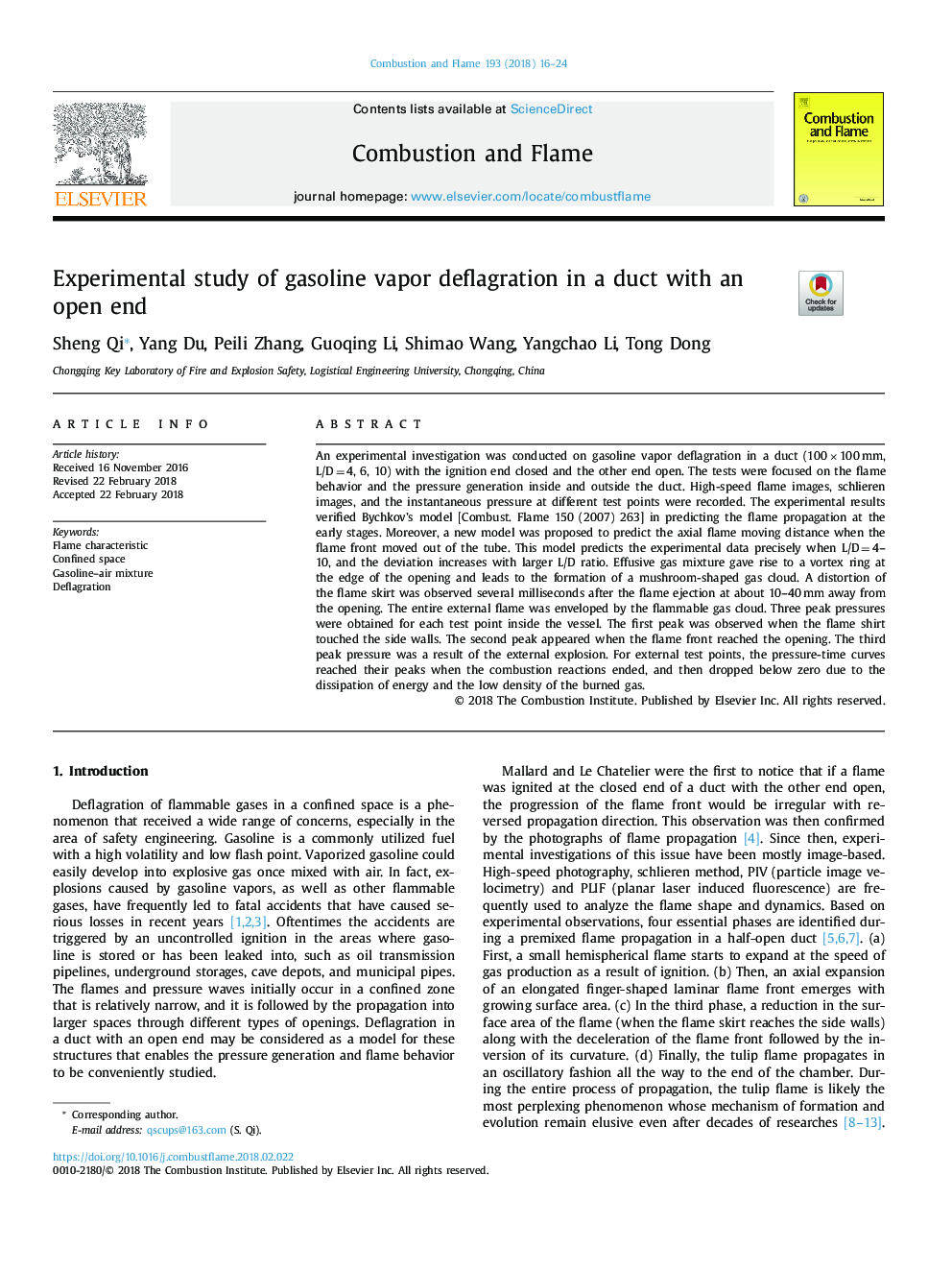| Article ID | Journal | Published Year | Pages | File Type |
|---|---|---|---|---|
| 6593533 | Combustion and Flame | 2018 | 9 Pages |
Abstract
An experimental investigation was conducted on gasoline vapor deflagration in a duct (100â¯Ãâ¯100â¯mm, L/Dâ¯=â¯4, 6, 10) with the ignition end closed and the other end open. The tests were focused on the flame behavior and the pressure generation inside and outside the duct. High-speed flame images, schlieren images, and the instantaneous pressure at different test points were recorded. The experimental results verified Bychkov's model [Combust. Flame 150 (2007) 263] in predicting the flame propagation at the early stages. Moreover, a new model was proposed to predict the axial flame moving distance when the flame front moved out of the tube. This model predicts the experimental data precisely when L/Dâ¯=â¯4-10, and the deviation increases with larger L/D ratio. Effusive gas mixture gave rise to a vortex ring at the edge of the opening and leads to the formation of a mushroom-shaped gas cloud. A distortion of the flame skirt was observed several milliseconds after the flame ejection at about 10-40â¯mm away from the opening. The entire external flame was enveloped by the flammable gas cloud. Three peak pressures were obtained for each test point inside the vessel. The first peak was observed when the flame shirt touched the side walls. The second peak appeared when the flame front reached the opening. The third peak pressure was a result of the external explosion. For external test points, the pressure-time curves reached their peaks when the combustion reactions ended, and then dropped below zero due to the dissipation of energy and the low density of the burned gas.
Keywords
Related Topics
Physical Sciences and Engineering
Chemical Engineering
Chemical Engineering (General)
Authors
Sheng Qi, Yang Du, Peili Zhang, Guoqing Li, Shimao Wang, Yangchao Li, Tong Dong,
